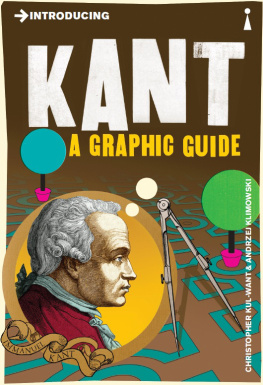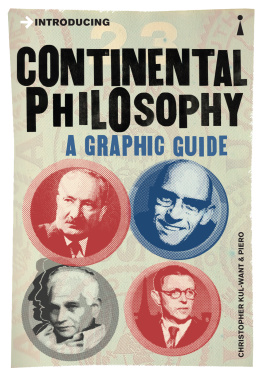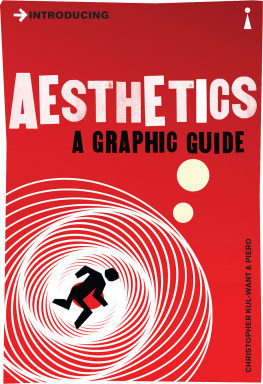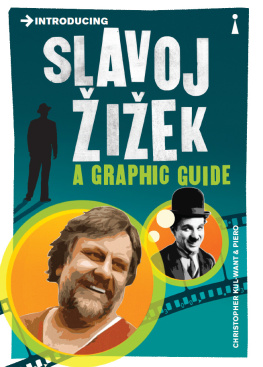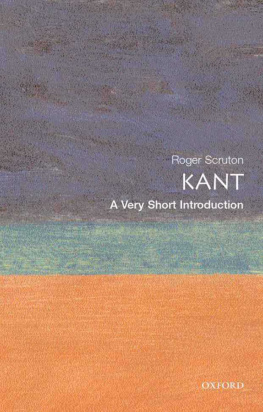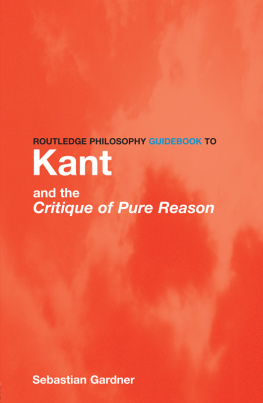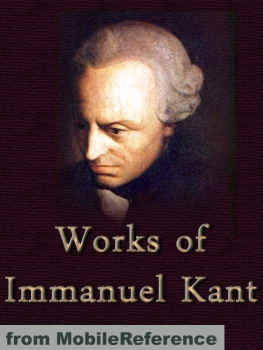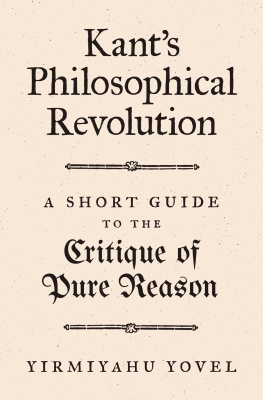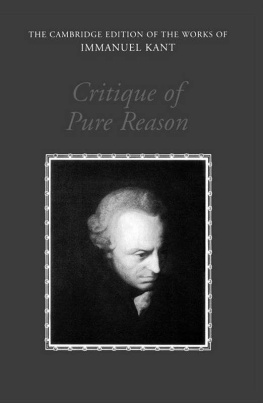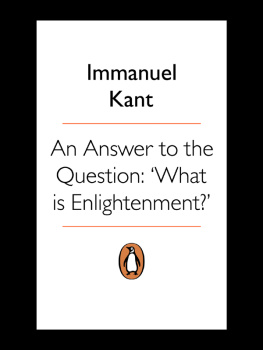Published by Icon Books Ltd, Omnibus Business Centre, 3941 North Road, London N7 9DP
Email:
www.introducingbooks.com
ISBN: 978-184831-209-8
Text copyright 2012 Icon Books Ltd
Illustrations copyright 2012 Icon Books Ltd
The author and illustrator has asserted their moral rights
Originating editor: Richard Appignanesi
No part of this book may be reproduced in any form, or by any means, without prior permission in writing from the publisher.
Contents
Situated at the threshold of modern thought, Kants philosophy is marked by scepticism and a loss of faith in both religion and metaphysics. His writings are remarkable for the way in which they systematically refute any claim to know what the truth is, or where it lies.
If we say, There is no God, there is not the least contradiction in such a judgement
Yet, in the face of this overwhelming demolition of traditional beliefs, Kants philosophy develops a new and profound sense of affirmation. It affirms the limits of human knowledge and the creative possibilities resulting from an acknowledgement of these limits. In place of superstition and dogma, Kant embraces change and human fallibility, recognizing these qualities to be the sources of pleasure. Such an outlook exceeds modernisms desire for order and progress and places Kants thought within the turmoil of the postmodern.
Early Life
Immanuel Kant was born in the East Prussian city of Knigsberg (now Kaliningrad) at 5 a.m., 22 April 1724. He was the fourth of nine children, three of whom died in infancy. His mother, Anna Regina, died when he was thirteen. Kant acknowledged a lasting debt to her love and instruction. She seems to have been the first to recognize his intellectual gifts.
It was she who decided to direct me toward an academic education.
His father, Johann Georg, was a harness-maker, and died when Kant was twenty-two. Kant spent his childhood in an artisanal suburb of Knigsberg, growing up in an intensely Pietist milieu.
Knigsberg was founded in the year of Kants birth out of an amalgam of three large towns grouped around the River Pregel. Unlike other German cities of the period, Knigsberg did not possess a closed urban lite consisting of patricians or local rural aristocracy.
It was the second largest city in Prussia and the most economically and culturally dynamic in Germany.
This allowed for a certain upward social mobility in the academic profession, owing to its particular economic and class structure.
Kant went to school at the Collegium Fridericianum, a private Pietist foundation, between 1732 and 1740, aided by the family pastor, Franz Albert Schtz, who was also a principal of the school.
I followed a rigorous and austere schooling in grammar and philology, accompanied by a rgime of inflexible piety.
We stress above all the felt power of Gods grace to transform the believers life through a conversion of born again experience.
In religious controversy, we urge that the aim should be to win over the heart of ones opponent rather than to gain intellectual victory.
Pietism was founded in Germany by Philipp Jakob Spener (16351705). The Pietists regarded Christian faith not as a set of doctrinal propositions but as a living relationship with God.
For Pietism, the institution of the Lutheran church was considered less important than the church invisible, whose membership in principle included the whole of humanity.
Despite Pietisms emphasis upon intuitive experience, its adherents laid great stress upon devotional exercises. A contemporary of Kants at the Collegium Fridericianum, David Ruhnken, who later became teacher of philology at the University of Leiden, spoke of the pedantic and gloomy discipline of fanatics which dominated the organization of the school.
The curriculum of the institution was filled with uninterrupted prayers and periods of devotional exercises, with periods of edification, sermons and catechizing.
Theoretical classes were designed to insist upon the topics relation to religious and theological questions.
Whilst Kant cherished the memory of the domestic Pietism of his parents and maintained respect for their traditional Pietist calm and serenity, he had nothing but scorn for the official version of Pietism encountered at school.
Partly under the influence of rational philosophy, he later became opposed in principle to religious ceremonies. In a letter of 1775 to J.C. Lavater he stated, No confession of faith, no appeal to holy names nor any observance of religious ceremonies can help to gain salvation.
I regard petitionary prayer as the wheedling of God.
As rector of the University of Knigsberg, he was always indisposed when his official participation in religious observances was required.
Kants one inspiring teacher at the Fridericianum was the Latin master Heydenreich who introduced him to a life-long love of Latin literature. Of Heydenreichs other colleagues, Kant was later to comment...
They were incapable of inflaming the sparks within us for the study of philosophy or mathematics but could certainly blow them out!
Nevertheless, by the age of sixteen, Kant had fulfilled the state-imposed matriculation requirement of the local university.
Accounts of Kant during his early years as a student show him to be poor, although there are indications that he was supported financially by some of his fellow students in return for his help with their work!
The University of Knigsberg was organized in the four traditional faculties, the three higher faculties of theology, law and medicine, and the fourth or lower faculty of philosophy. It is not known in which faculty Kant enrolled, but in spite of great poverty he did not pursue the qualification for a bureaucratic post in the Prussian administration.
I dedicated myself to the lower faculty of philosophy.
For much of the 18th century, the lower faculty was the most dynamic and innovative in the university. Because its curriculum was not adapted to the demands of the university, the range of subjects covered by philosophy included physics and geography, ignored by the higher faculties, and even religion, jurisprudence and medicine, which were their protected domains.

